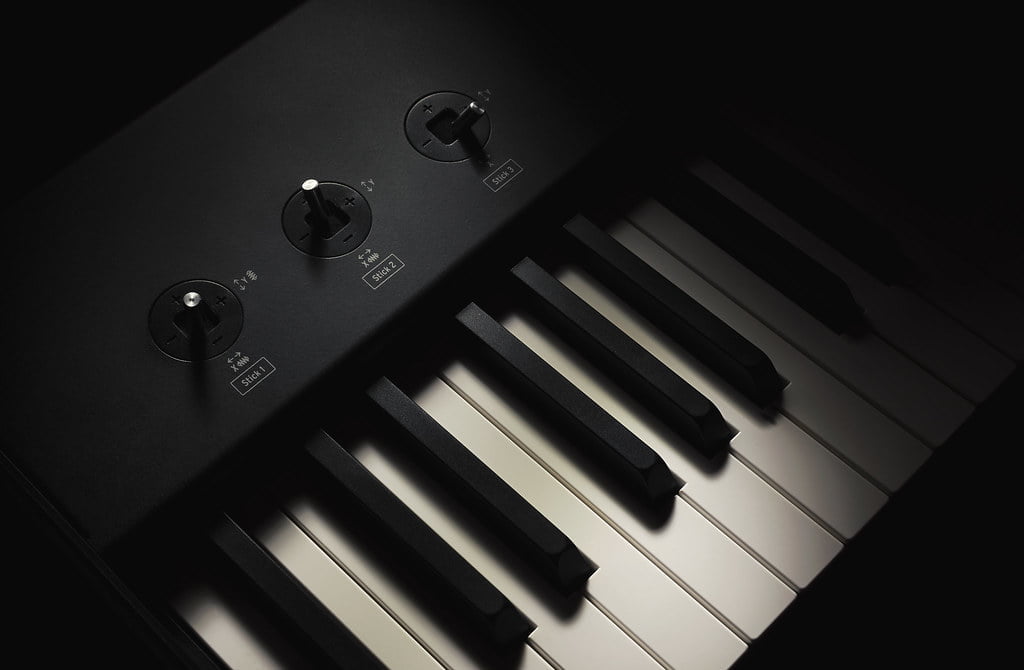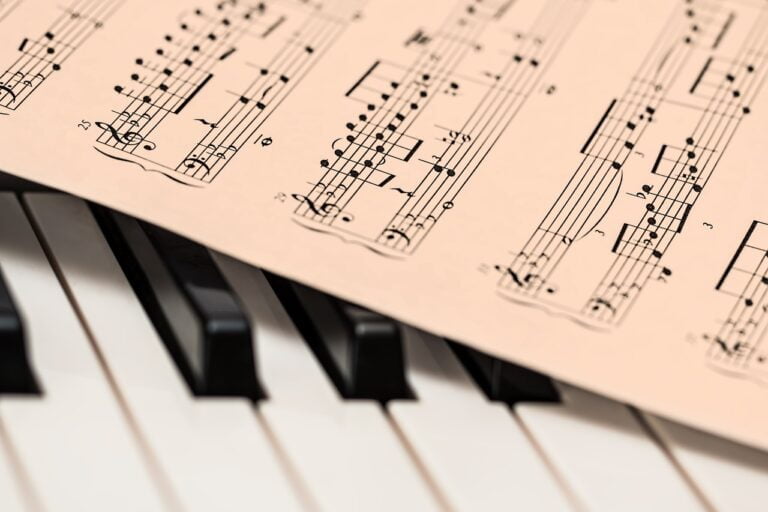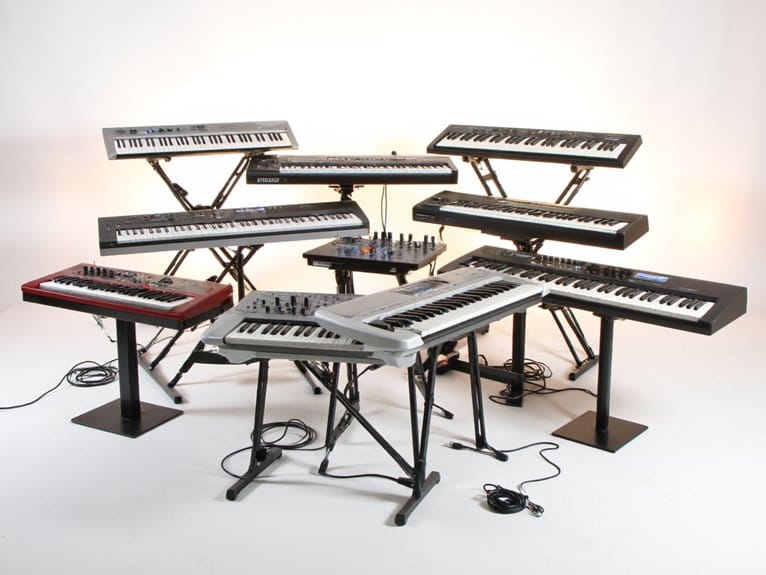MIDI Controller Vs. Synthesizer: Understanding the Differences
In comparing MIDI controllers to synthesizers, the differences become clear in how sound is generated and manipulated. MIDI controllers, excel in sending control signals to trigger sound outputs through external devices, offering flexibility and versatility. Synthesizers, on the other hand, focus on producing sound internally through oscillators, filters, and amplifiers, prioritizing quality and intricate sound generation. Understanding these distinctions sheds light on the unique capabilities each possesses.
We are supported by our audience. When you purchase through links on our site, we may earn an affiliate commission, at no extra cost for you. Learn more.
Sound Generation
Synthesizers directly produce sound through the manipulation of oscillators, filters, and amplifiers, whereas MIDI controllers function by sending control signals to trigger sound outputs on external devices. The fundamental difference lies in how sound is generated; synthesizers create sound internally, emphasizing the quality of sound generation, while MIDI controllers rely on external devices for sound production, focusing more on the control interface. Synthesizers offer a more self-contained approach to sound creation, allowing for a deeper exploration of different timbres and textures through their built-in components. On the other hand, MIDI controllers act as versatile tools that can interact with a wide range of external devices, offering flexibility in sound manipulation and performance.
When it comes to sound quality, synthesizers tend to have a more robust and intricate sound generation capability due to their dedicated components and circuitry. The oscillators, filters, and amplifiers within synthesizers work in harmony to produce rich, complex sounds with detailed sonic characteristics. In contrast, MIDI controllers rely on the sound-generating capabilities of external devices, which can vary in quality depending on the connected equipment. This difference in sound generation directly impacts the overall sonic output and versatility of each instrument.
Sound Manipulation
In sound manipulation, the focus shifts to the intricate adjustments of parameters and settings for shaping and molding audio outputs. Synthesizers offer a vast array of sound shaping possibilities, allowing for detailed control over factors such as oscillators, filters, and modulation sources. This level of manipulation enables users to craft entirely new sounds from scratch or modify existing presets with precision. Sound design on synthesizers involves delving into adjusting envelopes, waveforms, and effects to create unique sonic textures that suit the creator’s vision.
On the other hand, MIDI controllers excel in controlling parameters and settings of external devices or software for sound manipulation. These controllers provide tactile interfaces like knobs, faders, and pads, offering real-time manipulation of sound parameters. While MIDI controllers do not generate sound on their own, they play an important role in shaping and controlling sound through the transmission of MIDI data to connected devices.
Both MIDI controllers and synthesizers play key roles in sound shaping within music production, with each offering distinct advantages in the domain of sound manipulation. While synthesizers allow for intricate sound design and creation, MIDI controllers provide hands-on control for shaping sound in real-time through the manipulation of various parameters.
Portability
When considering portability in the world of music production equipment, the weight and size of MIDI controllers versus synthesizers become essential factors to evaluate. MIDI controllers are generally lightweight and compact, designed for easy transportation, making them the preferred choice for musicians who are frequently on the go. These controllers offer a range of sizes based on the number of keys, providing versatility in portability options to suit different needs in music production setups.
On the other hand, synthesizers can vary significantly in size and weight, with some models being bulkier and less portable compared to MIDI controllers. While there are compact synthesizer options available, they may still be less convenient for musicians looking for maximum portability due to their size and weight considerations. Portability plays a pivotal role in the decision-making process between MIDI controllers and synthesizers, especially for those who value mobility and ease of transport in their music production endeavors.
For musicians seeking a portable solution for music production, MIDI controllers offer a lightweight and compact alternative to synthesizers, allowing for easy transportation and setup in various environments. The size and weight differences between MIDI controllers and synthesizers make a notable impact on the overall portability of these instruments, influencing the choice based on individual preferences and requirements in music production scenarios.
Functionality
MIDI controllers excel in providing extensive control options for manipulating various parameters within software or hardware setups. On the other hand, synthesizers boast powerful sound creation capabilities, offering the ability to generate, shape, and sequence sounds with oscillators, filters, and amplifiers. Understanding the differences in functionality between MIDI controllers and synthesizers is essential for selecting the right tool for specific musical needs.
Control Options Comparison
While MIDI controllers offer a diverse array of control options for manipulating parameters, synthesizers prioritize sound generation and manipulation through a focus on oscillators, filters, envelopes, and effects. MIDI mapping allows users to assign specific controls on a MIDI controller to various parameters within a synthesizer, enhancing workflow and creativity. This flexibility enables musicians to tailor their performance setup to better suit their artistic vision, seamlessly integrating hardware and software. As a result, the relationship between MIDI controllers and synthesizers becomes a powerful partnership in music production and live performance.
- MIDI controllers offer keys, pads, sliders, and knobs for parameter manipulation.
- Synthesizers focus on sound generation using oscillators, filters, envelopes, and effects.
- MIDI controllers excel in real-time control and expressive performance capabilities.
- Synthesizers prioritize sound quality and sonic flexibility through advanced control options.
Sound Creation Capabilities
Synthesizers demonstrate an impressive range of sound creation capabilities, enabling intricate manipulation and sequencing for unparalleled sound design. Unlike MIDI controllers that focus on controlling external devices, synthesizers are digital instruments that can both manipulate and produce sound. By utilizing oscillators, filters, and amplifiers, synthesizers offer musicians a wide range of tools to craft unique sounds. MIDI controllers, on the other hand, do not generate sound themselves; instead, they send signals to trigger sounds in connected devices or software. This distinction highlights the synthesizer’s inherent capability to generate and shape sounds internally, making it a powerful tool for musicians and producers seeking to explore and create complex sonic landscapes.
Integration
When evaluating MIDI controllers and synthesizers, it’s crucial to assess their integration capabilities. Connectivity options and the level of command over sound parameters are fundamental aspects to analyze. Understanding how these devices interact and complement each other can improve the overall music production experience.
Connectivity Options
With MIDI controllers, the primary focus lies on the interface for controlling external devices or software through MIDI or USB connectivity. When considering connectivity options between MIDI controllers and synthesizers, there are several key points to keep in mind:
- MIDI controllers primarily rely on MIDI or USB connectivity.
- External devices can be easily controlled using MIDI controllers.
- Synthesizers can operate as standalone instruments or be integrated into a MIDI setup.
- USB connectivity is commonly used for seamless integration between MIDI controllers and software-based synthesizers.
Control Over Sound
For controlling sound parameters in real-time, MIDI controllers offer precise manipulation over external sound modules. Unlike synthesizers that focus on generating sound directly, MIDI controllers act as a bridge between the musician and the sound-producing equipment. The MIDI keyboard controller, a common type of MIDI controller, enables musicians to interact with digital synthesizers by adjusting parameters such as pitch, modulation, and volume in real-time. This control interface emphasizes efficiency in triggering notes and modifying sound characteristics swiftly. While synthesizers excel in sound quality due to their internal sound generation mechanisms, MIDI controllers excel in providing a tactile and intuitive way to shape and mold the produced sound. When integrated effectively, MIDI controllers and synthesizers complement each other in creating rich and dynamic musical experiences.
Performance Applications
MIDI controllers offer unparalleled versatility in live performances, allowing for real-time control over parameters and effects. When it comes to performance applications, MIDI controllers are extensively used by musicians, DJs, and electronic music producers for their dynamic performance capabilities. Here are some key points to take into account:
- Various Uses: MIDI controllers are used in a range of settings, from live concerts to studio recordings, offering flexibility and adaptability.
- Creating New Sounds: With MIDI controllers, artists can make new sounds on the fly, manipulating soundscapes and textures in real-time.
- Different Types Available: There are different types of MIDI controllers, including MIDI keyboards, drum pads, and DJ controllers, catering to diverse performance needs.
- Standalone Instruments: Some MIDI controllers can function as standalone instruments, allowing performers to create entire tracks using only the controller and a computer.
Creative Sound Design
In the domain of creative sound design, synthesizers stand out as powerful tools for sculpting and manipulating intricate audio landscapes. Synthesizers excel in this field due to their sophisticated architecture, which includes oscillators for generating sounds, filters for shaping frequencies, and modulation sources for adding movement and complexity to the audio output. These components allow musicians and producers to craft a wide range of sounds, from lush pads to gritty basslines, making synthesizers essential instruments in music production.
On the other hand, MIDI controllers play a complementary role in creative sound design by providing real-time control over various parameters and functions of synthesizers. With touch-sensitive keys and buttons, MIDI controllers enable nuanced musical expression, allowing users to manipulate sound textures and trigger notes with precision. While MIDI controllers lack the sound generation capabilities of synthesizers, they offer a tactile interface for shaping and modulating sounds in real-time, enhancing the overall creative process.
When combined, synthesizers and MIDI controllers form a dynamic duo in sound design, offering musicians and producers versatile tools for exploring new sonic possibilities. By leveraging the strengths of both instruments, artists can explore deeply into sound manipulation, experimentation, and innovation, ultimately pushing the boundaries of creative expression in music production.







